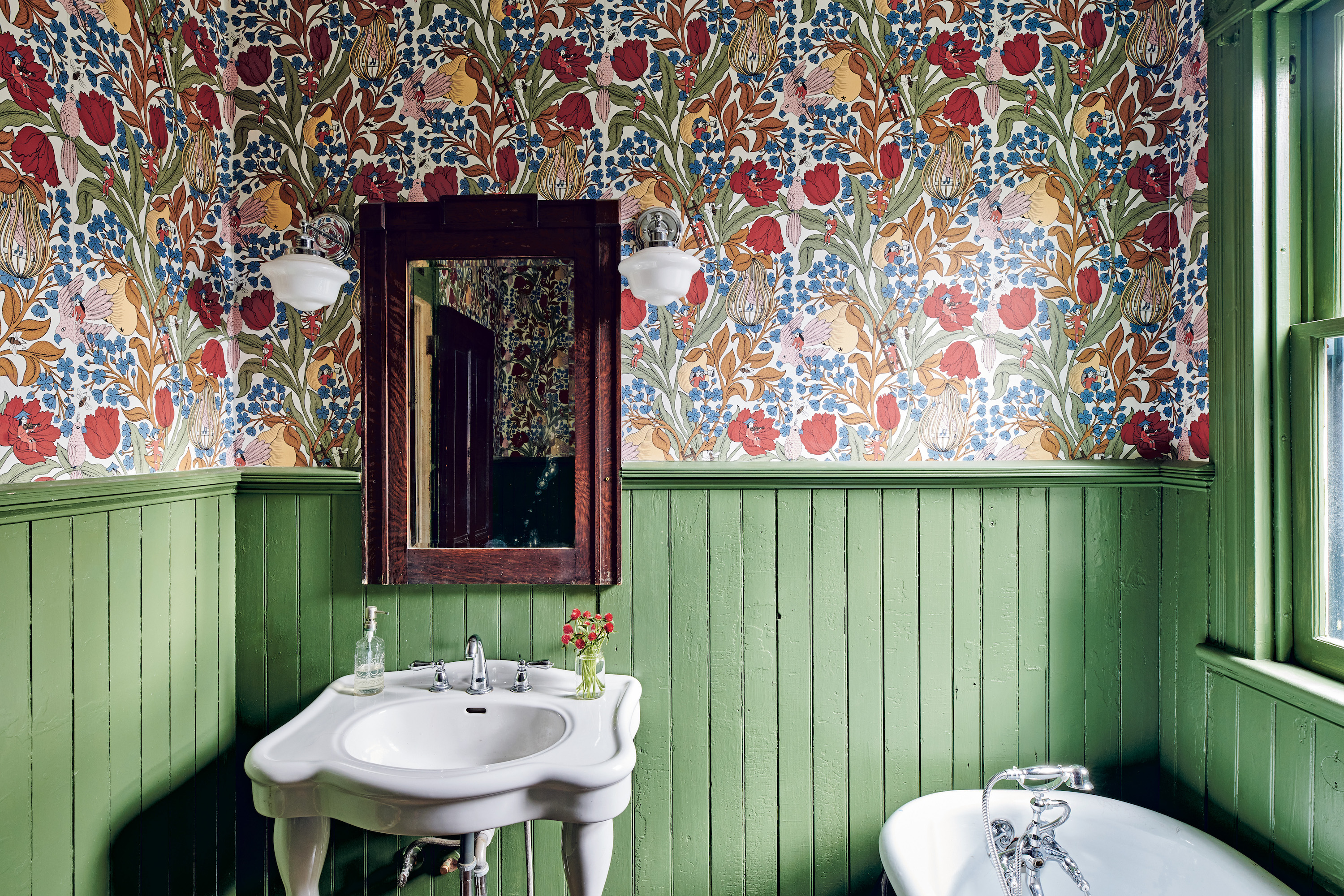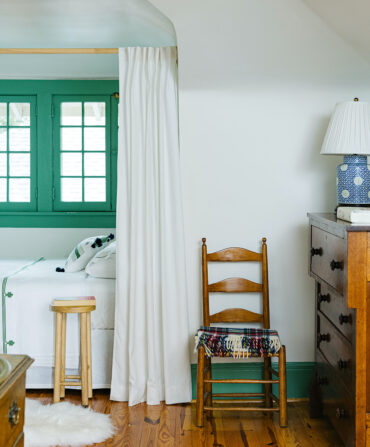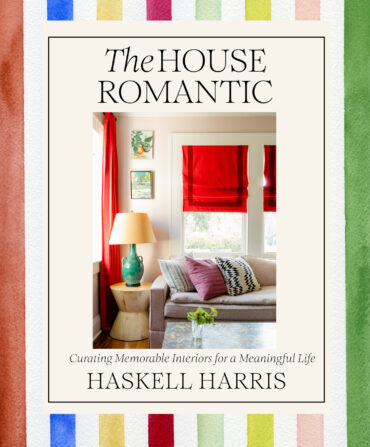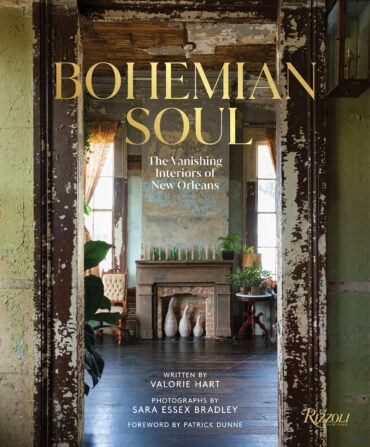Home & Garden
For the Love of Cheap Old Houses
In a captivating new book, the duo behind the popular Instagram account set the story straight on small Southern towns, shiplap, and why so many fading homes still have stories to tell

Photo: COPYRIGHT © 2023 BY KELLY MARSHAL
Details of old floral wallpaper; one family featured in Cheap Old Houses restored an abandoned church in Easton, Maryland.
A porcelain knob’s cold touch; the buzz of a cellar light; creaky wooden steps, foot-worn in their middles. Old houses spark something visceral in many of us, whether we’re remembering a grandparent’s country home with a wide front porch or just can’t stop thinking about a sagging Victorian we drove past on a back road.
The couple behind “Cheap Old Houses” understands this idea at a deep level. Through their Instagram handle @cheapoldhouses, popular newsletters, an HGTV show, and a new book, Elizabeth and Ethan Finkelstein tap into that widespread desire to save decaying houses that still might have a story left in them.
In 2016, the couple started an Instagram account to share homes on the market for less than $100,000, many of them once grand and falling into disrepair, and some nearly uninhabitable. They’ve since amassed more than 2.4 million followers who are fascinated by the farmhouses, tiny cabins, fading mansions, and even surprises like abandoned churches and lofts. The account saw a huge surge in popularity at the beginning of the pandemic, the couple says, when many city residents were craving wide open spaces—and a project. In 2021, the Finkelsteins premiered their HGTV show, and it was recently renewed for a spring 2024 season.

Photo: Photo courtesy HGTV
Ethan and Elizabeth Finkelstein; the new book.
“Our Instagram is focused on people who want to find an old house, purchase it, and use their creative brains, whereas the show is quick-moving, showing people what they can do to restore a cheap old house,” explains Elizabeth, who has a master’s degree in preservation. “But the book, we are so incredibly proud of because it has so much more depth—we are really able to sink our teeth into the heart of this movement, which is people changing their lives to save an old house. They’re finding a way into this crazy housing market and finding a way to do something that is so fulfilling to them.”
The Instagram account and show are all about before and during, but Cheap Old Houses the book shows the inspiring afters. One chapter describes how the $44,000 listing for a 1913 farmhouse in Madison, Georgia, touted the rural acreage but suggested tearing down the structure. Its savior, Michael Redwine, saw beneath the oxidized metal roof, right through to its heart pine tongue-and-groove walls and ceilings. In gorgeous full-page pictures and in helpful detail, the book shows how Redwine loved it back to life, tearing down stained wallpaper, re-oiling the walls—“Sheetrock will never come through these doors,” he quips—and in one room, preserving the patina of pink paint.

Photo: copyright © 2023 by Kelly Marshall; copyright © 2023 by Will Brinson
A $44,000 farmhouse in Madison, Georgia; the homeowner maintained the original pink bedroom.
The book is divided into mansions, farmhouses, time capsules, cabins, and unconventional homes (turn to page 236 for an epic renovated Gothic church in Easton, Maryland). In one manifesto titled “Save the Neediest House on the Block,” homeowner Betsy Sweeny explains how she is currently saving a once-crumbling circa 1892 row house she bought for $18,500 in Wheeling, West Virginia—you’ll understand her commitment when you see the gorgeous staircase.

Photo: copyright © 2023 by Kelly Marshall
A Wheeling, West Virginia, row house; its staircase.
Each section also points out notable features of old homes such as farmhouse sinks, wavy glass, and chandeliers, plus tips and resources for sourcing and repairing them. “In the South, I see so many rooms clad in beadboard, which is one of my favorite things,” Elizabeth says. And she gives a point of clarification: Beadboard is vertical, not to be confused with horizontal shiplap, which has been having a yearslong moment in some interior design circles. “Most shiplap was never meant to be seen—in old homes, it was an under-layer for wallpaper.”

Photo: copyright © 2023 by Kelly Marshall
Beadboard in the West Virginia home’s bathroom.
Although the book—and show and Instagram—includes houses from all over, Southern homes do set themselves apart to the upstate New York couple for a few reasons: “The porches, of course,” Elizabeth says. “I think we all have a vision of that quintessential Southern home with the porch and the hanging ferns. But what really stands out to me, coming from the North where there’s a central fireplace and everything is built around keeping warm, in the South it’s all about keeping cool. Central halls go right through the house, and doorways and windows are all meant for air flow.” Ethan adds with a laugh: “One question—where are the basements? Where do you put all your stuff?”

Photo: copyright © 2023 by Kelly Marshall
A 1912 home in Eupora, Mississippi.
In the “time capsules” chapter, the Finkelsteins tell the story of Kristian Berryhill’s Queen Anne, built in 1912 in little Eupora, Mississippi. It was for decades a cherished home, but then sat empty for years, tugging at locals’ hearts before Berryhill bought it for $45,000. “I was in love,” Berryhill describes. “I knew I would have so much regret if I didn’t take the chance and had to watch it fall into disrepair like many other historical houses in our town.”

Photo: copyright © 2023 by Kelly Marshall
One of Berryhill’s first endeavors was to paint a room deep blue; layers of history remain.
The pages that follow share the evocative—and relatable for anyone who has lived through renovations—tale of living in the middle of demo and construction chaos. Berryhill didn’t touch the soaring eleven-foot pocket doors and original hardwood floors, but she did shore up a few safety hazards, painted one room and its trim a lovely deep blue, converted a pantry to a powder room, and reworked part of the floor plan. “Now I am more determined than ever to prove this can be done; anyone can do it,” she says. “Most importantly, I want to prove that these houses are worth it.”







